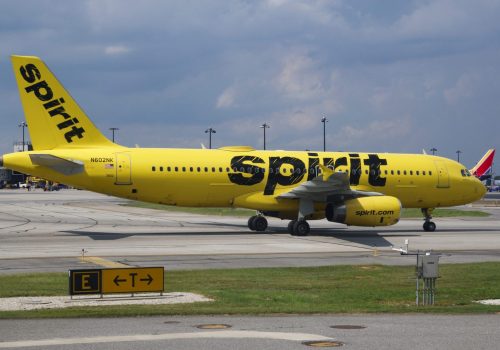
- AC replacement costs $5,000—$14,000 on average, but it can cost up to $40,000.
- Factors such as home size, efficiency ratings, and system types can affect the total cost.
- To budget for AC replacement, consider your home’s needs, climate, and financing options.
Homeowners typically spend between $5,000 and $14,000 on AC replacement. Exact costs depend on factors such as your home size, the unit’s energy efficiency, ductwork replacement, and installation complexity. If you have a larger home, you could end up spending nearly $40,000. Given all of this, it’s a good idea to create a budget for AC replacement that accounts for your cooling needs and current finances.
If your HVAC system is over 10 years old, it’s likely time to consider replacement. A new AC system can also lower your energy bills. In fact, you could save up to 50% on your utility bills by upgrading to an energy-efficient unit, according to the Department of Energy (DOE).
Below, we’ll walk you through how to budget for AC replacement, covering cost factors, financing options, and cost-saving tips. By the end, you should have a solid idea of just how much your new HVAC system will cost.

HVAC Installation
In general, you’ll pay between $5,540 and $10,980 for an HVAC unit, installation costs, and removal of your old unit.

Furnace Replacement
You can expect to pay between $4,000 and $7,000, including installation, old furnace removal, and labor.

Heat Pump Installation
You’ll likely pay between $3,000 and $35,000, but most homeowners spend between $5,800 and $7,500.
Average Cost To Replace an AC Unit
On average, homeowners spend between $5,000 and $14,000 to replace their AC unit, but the total cost depends on several factors, including the system type, location, and size of the home. For example, you could pay as little as $150 for a window AC or up to $40,000 for a highly efficient dual fuel system for a large home.
Home size has one of the biggest impacts on AC replacement costs — the larger your home, the more tonnage it requires. Houses over 3,000 square feet typically require more than one cooling unit. Your insulation and local climate can also affect tonnage recommendations.
The table below highlights average AC replacement costs, including equipment and labor, for various home sizes, according to our HVAC cost data. The prices exclude additional expenses, such as thermostats and ductwork.
| Home Size (Sq. Ft.) | AC Size (Tons) | Cost Range |
|---|---|---|
| 1,000–1,500 | 1.5–2.5 | $4,853–$18,854 |
| 1,600–2,000 | 2.5–3.5 | $5,026–$19,051 |
| 2,100–2,500 | 3.5–4 | $5,113–$37,017 |
| 2,600–3,000 | 4–5 | $5,892–$38,892 |
| 3,100–3,500 | 5–6 | $10,572–$39,286 |
| 3,600–4,000 | 6–6.5 | $10,745–$39,681 |
What Else Affects the Cost of AC Replacement?
While the size of your home will significantly impact your AC replacement costs, the system type, efficiency rating, and additional expenses can also affect your total bill.
System Type
Outside of home size, one of the biggest factors that affects the total cost of AC replacement is the HVAC system type. Window air conditioners are among the most affordable, ranging from $150 to $550 per unit, but one unit won’t cool your entire house. For whole-home cooling, most homeowners go with a central AC, a ductless mini-split, or a heat pump.
- Central AC: Most central AC systems cost between $5,000 and $14,000, but you’ll pay more for larger homes and high-efficiency ratings. Units paired with an electric furnace range from $4,853 to $27,674, while AC systems paired with gas furnaces cost $5,460–$30,951.
- Ductless mini-split (zoned heat pump): While technically a type of air-source heat pump, mini-splits operate without ducts and allow room-by-room control. Homeowners typically pay $2,500–$11,000 for ductless mini-split systems. However, a single-zone mini-split could cost as little as $500, and multizone units can cost upward of $14,500.
- Dual fuel: These systems use an electric heat pump with a gas furnace. They tend to cost between $7,000 and $16,500. However, you could pay closer to $40,000 if your home is 4,000 square feet.
- Other heat pumps: Air-source heat pumps range from $6,500 to $13,300, while geothermal options cost between $15,000 and $35,000. Solar heat pumps could put you back $17,000 to $32,000.
SEER2 Efficiency Rating
The Seasonal Energy Efficiency Ratio 2 (SEER2) refers to the amount of total heat removed from a conditioned space during the warmer seasons. A higher number means the system is more efficient, resulting in higher energy savings, but it’s also usually more expensive. SEER2 goes up to 23.6, and units with a rating of 17 or higher are generally considered “highly efficient.”
In the Northern United States, AC systems must have a minimum 13.4 SEER2 rating. In the Southeast and Southwest, a system with a capacity below 45,000 British thermal units (BTUs) needs a minimum 14.3 SEER2 rating. If the HVAC has a capacity of 45,000 BTUs or higher, it requires a SEER rating of 13.8 or higher.
Editor’s Note: This article references SEER2 ratings when discussing split systems that include an AC and gas furnace. Keep in mind that SEER2 only applies to the cooling side — the air conditioner. It does not measure the efficiency of the furnace, since SEER2 is a cooling-only rating.
Ductwork
If you’re replacing your older HVAC system, you might also need to replace your ductwork. Some types only last 15 to 20 years, while others, such as sheet metal, can last 50 or more years with proper care. If you don’t have to repair or replace the ductwork, you stand to save hundreds or thousands of dollars.
The larger your home, the more ductwork you need — and the more it’s going to cost. Most homeowners pay around $1,250 for air duct replacement. The job could cost as little as $450 for a small home or up to $6,000 or so for a larger house.
Today’s Homeowner Tip
If you don’t already have ductwork, brand-new air duct installation could set you back several thousand dollars. In these cases, it’s much more cost-effective to stick with a ductless option.
Installation Complexity
You’ll incur higher costs for AC installation in areas that are difficult to access, such as your attic or crawlspace. For example, if your HVAC contractor has to remove drywall to replace your air ducts, your bill could increase by $350 to $2,250. Homeowners also pay more if they need to have their old system removed or require structural updates to accommodate their new unit.
Additional Factors
Several other factors could influence the total cost of your AC replacement.
- Labor: Labor prices vary depending on your location and the area’s cost of living. For example, you’ll pay more in a rural area if the professional has to travel to you. Labor makes up around $1,039 of the total AC replacement price for smaller homes — or $7,104 for large houses.
- Permits: Some HVAC installations require local permits, which cost between $250 and $750 on average. For inspections, expect to add $100 to $300 to the bill.
- Thermostats: Reuse an older thermostat to save, but make the switch to a programmable thermostat if you don’t already have one, as the energy savings add up. A new installation ranges from $39 to $217 on average.
- Additional work: Your bill could rise if you run into unexpected work, such as needing new ductwork insulation or electrical repairs. Electricians cost $50 to $130 per hour, according to HomeGuide. Ductwork insulation could set you back between $200 and $1,700.
How To Estimate Your Budget
Follow these steps to create a realistic budget for your AC replacement.
- Get a ballpark estimate. Use online tools and calculators to determine the appropriate AC unit for your home and climate. Note your options’ average costs.
- Include a cushion for potential extras. Unexpected costs can ruin your budget. Add 10% to 20% to the total for unforeseen problems, including additional electrical work, ductwork replacement, or new insulation.
- Consider lifetime costs. While an energy-efficient unit costs more now, systems with high SEER2 ratings can save you hundreds over the next few years. Unless you’re on a very tight budget and need a new AC immediately, it likely makes financial sense to opt for the more efficient system.
- Think ahead. Will you also need a new furnace, ductwork, or thermostat? Does your area require permits?
Once you have a solid idea of what a new AC unit will cost you, reach out to HVAC professionals to get at least three quotes. To find reputable contractors, read reviews, ask about their experience, and verify that they hold the necessary licenses.
Financing and Incentive Options
There’s no doubt about it — AC replacement requires a substantial investment. While you can pay out of pocket from your savings, many homeowners require financing. Available incentives can also help you lower the overall costs.
Financing
Banks, credit unions, and other lenders offer personal loans with fixed interest rates and predetermined repayment terms. Some have loans designed for home improvement.
Contractors often partner with third-party lenders to offer their customers financing options, including loans and lines of credit. You may qualify for promotional periods with 0% annual percentage rate (APR).
Other options include home equity loans and home equity lines of credit (HELOC), which borrow against the equity of your home — the value of your property minus any liens. They have longer approval processes, but they allow you to tackle several home improvement tasks at once.
Today’s Homeowner Tip
While you can use credit cards to pay for HVAC replacement, consider using one only if you have access to a promotional rate. Credit cards tend to have much higher APRs than other options.
Rebates and Tax Credits
If you purchase an energy-efficient AC, you could qualify for federal tax credits. Homeowners can receive up to $2,000 in credits for qualifying heat pumps and up to $1,200 for central air conditioners.
In addition, state and local governments often offer financing assistance, rebates, and other incentives for energy-efficient AC replacement. Use the Database of State Incentives for Renewables and Efficiency (DSIRE) to start exploring your options.
Cost-Saving Tips
In addition to rebates and tax credits, the following strategies can help you save on this major purchase.
- Replace your AC in the offseason. Many contractors and air conditioner brands offer discounts for offseason purchases and installations. Buy when demand is lower, in the fall or winter, rather than in the summer.
- Compare estimates. Collect at least three quotes from reputable HVAC professionals to find the best deal. If a deal seems too good to be true, it probably is.
- Opt for midefficiency SEER2. Unless you live in a hot climate, a midefficiency SEER2 unit allows you to balance energy savings and initial installation costs.
- Bundle your purchases. Buying an AC with a furnace or new ductwork will cost more upfront, but many contractors offer discounts if you purchase more than one service or product.
- Ask about utility rebates. Some utility companies have rebates and incentives for customers who upgrade to energy-efficient HVAC units. Reach out to your utilities for more information.
- Reuse components where possible. Little purchases, such as thermostats, add up. Reusing components can save you hundreds of dollars, if not more.
Additionally, verify that your AC actually needs to be replaced, rather than repaired. “One thing I often hear from my clients is that companies are trying to sell them a replacement for a system that’s only 8 years old,” said Mitch Rosa, owner of Hudson Valley HVAC in Orange County, New York. “They might only need a new motor or a $500 to $600 repair, yet the HVAC company is trying to sell them a new system for $15,000.”
How We Get Our HVAC Cost Data
Unless otherwise specified, the prices in this article are based on average costs to install AC systems in a typical U.S. home and are meant to give you an idea of what to expect. Actual costs will vary based on your home’s size, the type of system you choose, and local labor rates.
To estimate these costs, we reviewed wholesale prices for HVAC equipment — including condensers, evaporator coils, air handlers, heat pumps, and both gas and electric furnaces — from AC Direct, HVACDirect.com, and Buy Comfort Direct. We then calculated system totals using different combinations of components, factored in typical retail markups, and added labor based on the average time it takes to replace a system.
Every home is different, so we strongly recommend getting quotes from at least two licensed HVAC contractors in your area to get a more accurate estimate.
FAQs About Budgeting for AC Replacement
When should I replace my AC unit?
You should consider replacing your AC unit if it’s 10 years or older. Even newer systems may need to be replaced after 15 years, but high-quality ductless mini-splits can last 20 years or more with proper care. In addition, you might have to buy a new unit sooner if it has excess wear and tear from frequent use.
Some signs you should replace your AC unit include regularly required repairs, excessive noise, or poor cooling. You also likely need a new system if it uses R-22 (Freon) or your energy bills are increasing, especially during cooling months.
A new AC doesn’t only cool your home better. You could save between 20% and 50% on monthly utility bills by upgrading to an energy-efficient HVAC system with proper insulation, air sealing, and thermostat settings, according to the DOE.
Does AC replacement include ductwork?
Unless specified, AC replacement quotes usually don’t include ductwork replacement, which costs $1,250 for the average home. The estimate typically only covers the AC system, installation, and any other previously discussed services. You must pay separately for new or replacement ductwork; however, some contractors offer discounts on bundled services.
The air ducts’ material dictates replacement timelines. Most types last 15 to 20 years, but sheet metal can last over 50. For replacement, budget between $10 and $25 per linear foot of ductwork. If your home lacks air ducts and you’re installing central air, you’ll likely pay $7,000 to $15,000 or more, depending on the size of your property.
What is the most affordable AC system?
The most affordable AC systems are window and portable units. Window units average between $150 and $550, while portable systems range from $100 to $500. However, these AC units aren’t ideal for whole-house cooling.
If you have existing ductwork, central AC systems are usually the most affordable whole-house solution — $5,000 to $14,000 on average. If you don’t have air ducts, it’s more cost-effective to install a multizone ductless mini-split — $2,500 to $11,000. Single-zone mini-splits start at just $500.
Can I finance an AC replacement?
Yes, you can finance AC replacement if you qualify for a financing offer. Homeowners can apply for loans or lines of credit through banks, credit unions, HVAC contracting lending partners, or other lenders. You typically need at least good credit (a minimum of 670), but lenders often offer 0% APR promotional periods to qualifying applicants.
Many state and local governments also provide financing and incentives to residents. While these have strict guidelines applicants need to meet, they sometimes accept those with poor, bad, or no credit. You can use DSIRE to find offers in your area.





Leave a Reply